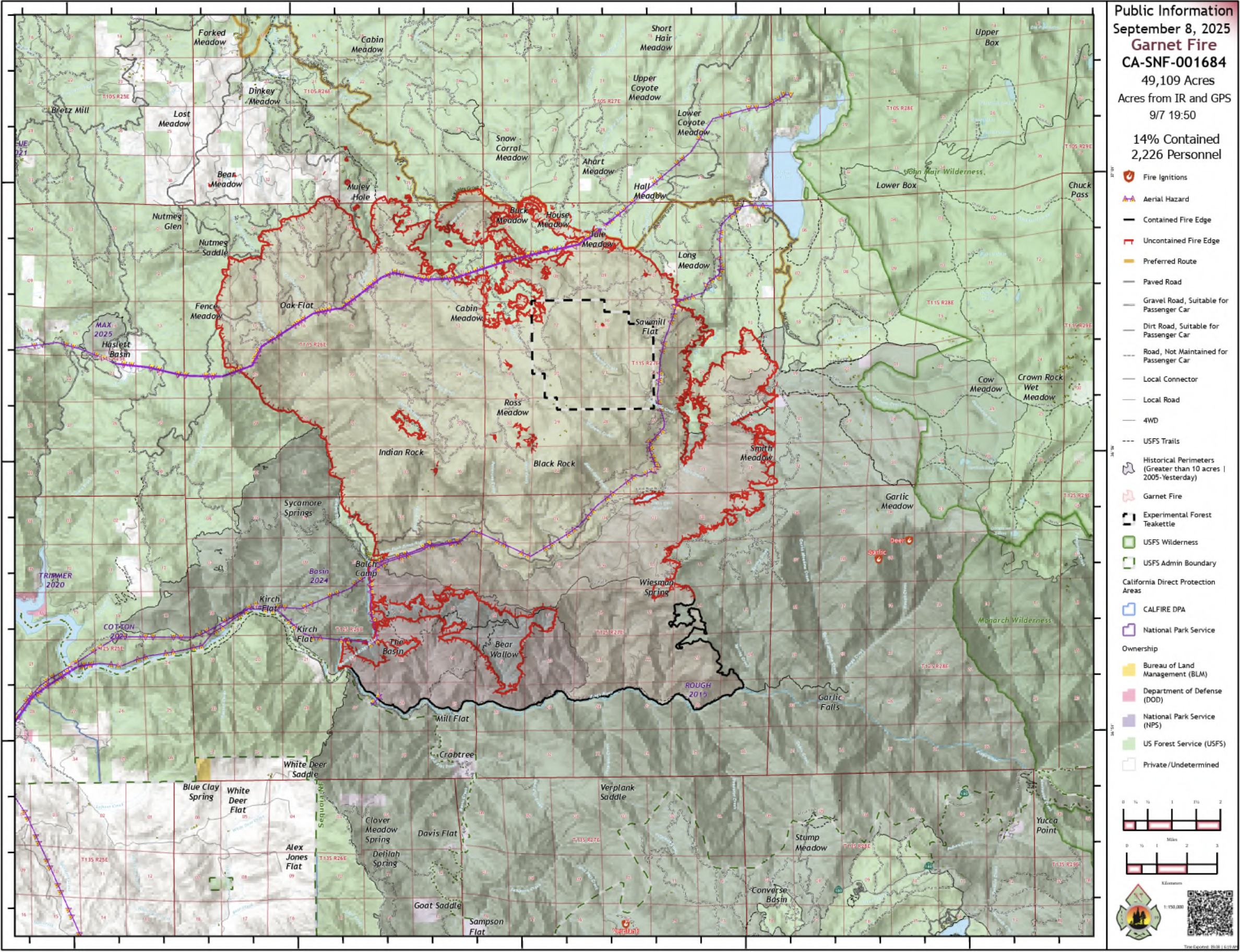
September 8, 2025 — Firefighters are battling an aggressive northern and northwestern push of the Garnet Fire, which has now consumed 49,109 acres since it was sparked by lightning on August 24. As of Monday morning, the fire is 14% contained with 2,226 total personnel assigned to the incident.
The fire’s rapid growth is being fueled by low humidity, dense timber stands, and a significant amount of dead and downed trees from beetle kill. Overnight, the fire advanced significantly, with multiple spot fires jumping across McKinley Grove Road. Fire activity is expected to increase throughout the day as the inversion lifts.
In the northwest, the fire has reached containment lines between Fence Meadow and Nutmeg Saddle. Fire crews have been working on contingency lines to the east of the communities of Tollhouse and Shaver Lake for the past two weeks. Overnight, crews conducted strategic firing operations south along dozer lines in Bear Mountain to protect assets in the Dinkey Meadow, Bear Meadow, and Lost Meadow areas.
Resources have been shifted to the northern and northwestern edges to reinforce contingency lines in Dinkey Meadow and Bear Meadow. Crews are working to contain the spot fires north of McKinley Grove Road and are preparing Snow Corral Road as a containment line. On the eastern edge, firefighters are engaged in direct line construction and snagging operations.
Aerial support, including helicopters and very large air tankers (VLATs), are assisting with direct suppression efforts by laying down retardant to slow the fire’s progression. Today marks the transition of command from California Incident Management Team 10 to California Incident Management Team 5.
Residents in foothill communities are watching the Garnet Fire’s growth with growing anxiety, many worried it could become a repeat of the devastating Creek Fire that burned over 379,000 acres in 2020. The Creek Fire, also started by lightning, rapidly expanded, forcing mass evacuations and destroying hundreds of structures.
“It’s a scary thought,” said one Shaver Lake resident who wished to remain anonymous. “Every time a fire gets big up here, everyone thinks of the Creek Fire. We saw what that did. The fear is that this one gets away and we lose everything all over again.”
The similarities, a lightning-caused fire in the same general area, dry conditions, and a rapid, north-moving burn, are unsettling for many. While fire officials are working tirelessly to contain the blaze and protect communities, the memory of the Creek Fire is a stark reminder of the unpredictable and destructive nature of these blazes. Residents are advised to stay informed and prepare for potential evacuation orders.









